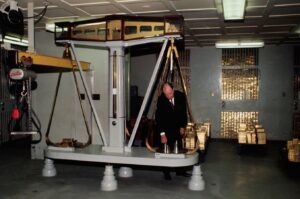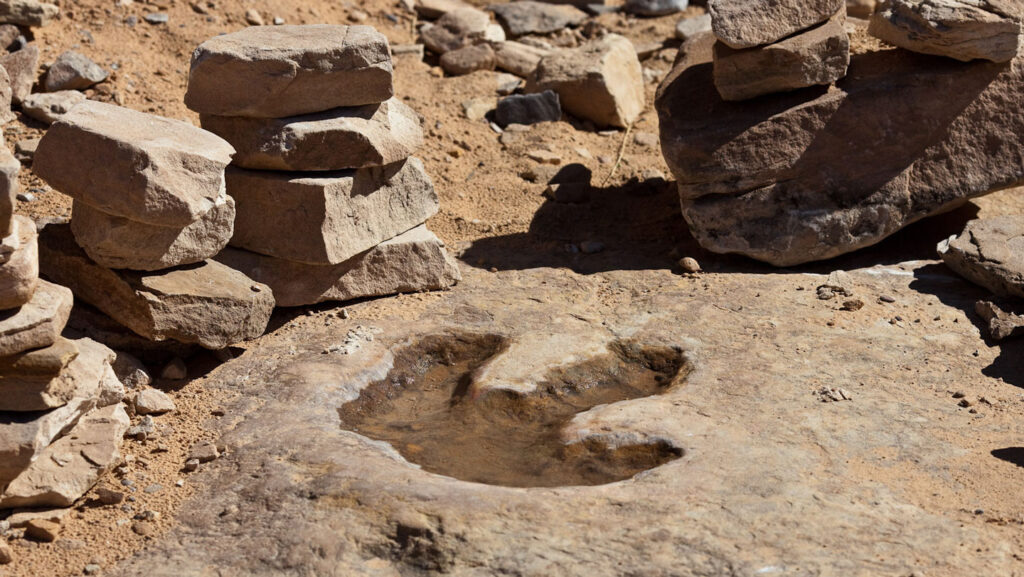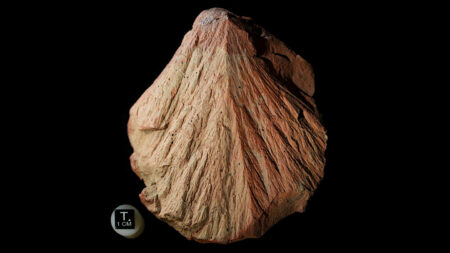Over a video call from a dig site near Oxford, England, Peter Falkingham points his phone down to show a fossilized footprint of what was probably a large sauropod.
Stepping inside the long-necked dinosaur print, which could fit both of his feet multiple times, he explains that these marks are parts of trackways: millions-of-years-old footprints left by dinosaurs walking on wet ground that fossilized. These trackways are key to estimating dinosaur running speeds. “The faster you move, the longer the stride you take,” says Falkingham, a paleobiologist at Liverpool John Moores University in England.
In the 1970s, zoologist Robert McNeill Alexander used this principle to develop a set of equations to calculate animals’ speeds based on the distance between their footprints. Suddenly, any scientist who found dinosaur trackways could calculate the potential speed of that animal while it was alive — Tyrannosaurus rex, for example, might hit 20 kilometers per hour, about a five-minute-mile pace, while Velociraptors could go as fast as 40 kph, a 2.5-minute mile.
“It’s easy to plug numbers into the equation and get a number out, and you feel like you’ve done a calculation, so it must be correct,” Falkingham says.
Maybe not.
These equations were originally developed using footprints of mammals walking on hard ground. Trackways form only on wet soil, and dinosaur skeletons are much more similar to those of modern birds, not mammals, says Jonathan Codd, a physiologist at the University of Manchester in England. Another variable is hip height. The calculations factor in that distance from the ground, but that’s often unknown when all that is left is the animal’s footprints.
The formula can give an idea of how fast an animal was moving, but not an exact speed like most studies report, Falkingham says. “I got grumpy at reading all these papers.”
Falkingham decided to put the math to the test using videos of helmeted guinea fowl (Numida meleagris) walking on mud, recorded more than 10 years ago as part of a study to reconstruct the 3-D motion of the bird’s foot as it went in and out of mud. It was messy business, and after every experiment, the birds had to have their feet cleaned.
What was worse, the scientists were mixing their own mud using poppy seeds and tiny glass bubbles so they could use X-rays to “see” the bird’s foot through the mud. “It took a long time to mix, so you don’t want to be mixing it for every experiment, but [the birds] kept [pooping] in it. You’d make a piece, and you come back the next day and it’s molding and smelly,” Falkingham recalls.
Out of curiosity, on one of the last days of filming, the researchers decided to let two of the birds walk around freely on the mud — sometimes encouraging them forward with a glove mounted on a stick. The team recorded the birds with high-speed videos and took images of the corresponding footprints. A decade later, those two birds have become the stars of a new study on the accuracy of dinosaur speed estimations.
The actual speed of those guinea fowl didn’t match with those calculated from the footprints they left, Falkingham and his colleagues report June 25 in Biology Letters. The calculated speeds could be up to 1.5 times faster than the actual animals moved, probably because walking over soft, sticky ground slowed the birds down.
The equation worked pretty well in previous studies of guinea fowl running on a treadmill because the birds were taking uniform steps on a hard surface. But the birds in this study had strides of different lengths even while maintaining a constant speed. “That’s just how animals move when they’re out in the wild. They speed up, they slow down, they take longer strides when they don’t need to,” Falkingham says.
These data are not the definitive answer to the challenge of dinosaur speed estimation, he says. They just show that the lab math isn’t adding up in the real world.
So, could T. rex run faster than humans? Speed estimates can vary from 20 to 40 kph.
“Somewhere in there’s the answer, but you may just never know,” says Codd, who was not involved in the study. The solution might be to accept the limitations of what can be said about a creature no one has ever seen.
Read the full article here

















